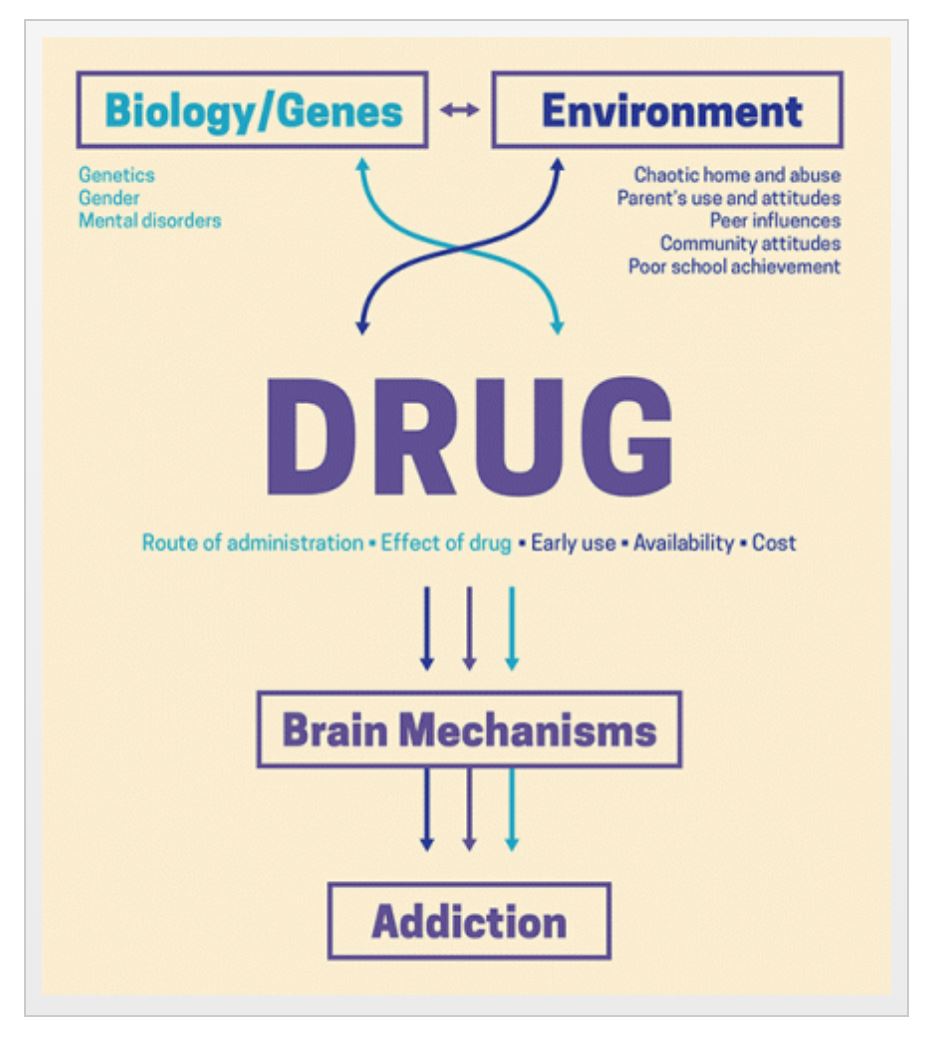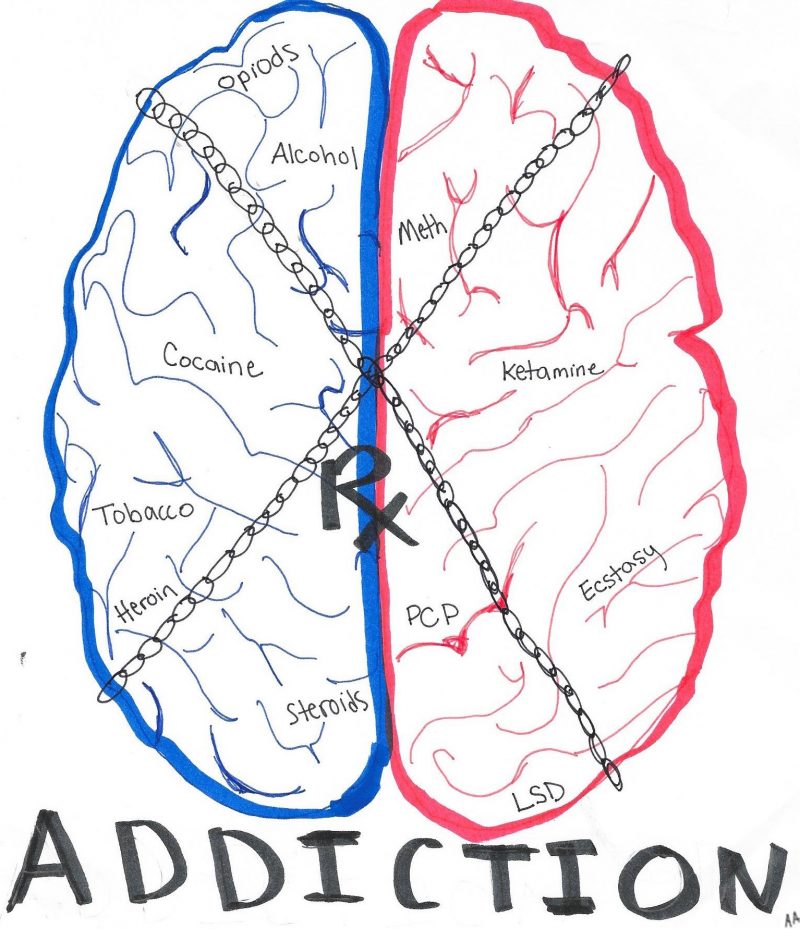The Pandemic of Addiction
The statistics surrounding addiction don’t lie, the U.S. has a pandemic on its hands. So what’s the situation?
In 2017, we saw a 9.6% increase in overdose deaths in the U.S. from 2016. That is a near ten percent jump in just one year. This isn’t a new issue. Also according to the CDC, “During 2008–2011, an average of 1.1 million emergency department (ED) visits were made each year for drug poisoning, with a visit rate of 35.4 per 10,000 persons. Poisoning is the leading cause of injury-related mortality in the United States, with more than 40,000 deaths annually. Drugs account for 90% of poisoning deaths, and the number of deaths from drug poisoning has increased substantially in recent years.
If you’re interested in digging deeper, here’s the link to the CDC’s website, where the above statistics were taken from. If a quick video interview is more your style, check on the short video below.
Why do some people get addicted and others do not?
Contrary to the common stigma and popular belief, there is no way to outthink or outwill addiction. No one person is safe from becoming an addict, simply because they’re stronger than the rest (perhaps superheroes, but unfortunately the science isn’t out on that). However, it is true that the first choice to use a specific drug is typically the choice of the user, with the exception of certain circumstances, like being drugged by someone else. With this in mind, however, many commonly accepted substances can be the start of a path that leads to addiction, Alcohol use, especially before age 21, can be very addictive. Additionally, many patients become addicted to substances that were prescribed and given to them by a medical doctor.
There is no one path to addiction or drug use, but there are some common denominators.
If the first use is typically a choice, then what makes some people try it?
There are four reasons that are the most common for taking a drug.
First, to feel good. Must illicit drugs (and many prescription) have the effect of making you feel good. This is because many drugs act directly or indirectly on dopamine. Dopamine is the neurotransmitter in our brain that tells us when something is pleasurable. This can be really important! For example, it trains us to crave food, water, and sleep, which are all things we need to stay alive and healthy. But when a drug hijacks this system, it gets blown way out of proportion, and there is way too much dopamine that is released and sticks around. The side effect of this is that people feel good and may develop a dependence on that feeling.
Second, to feel better. What this typically applies to is people under great amounts of stress, or those who have preexisting mental health illnesses like anxiety and depression. When the brain is under significant stress, whether from an acute situation like divorce or losing a job, or from a long-term chemical imbalance like depression, dopamine release would have a major impact on making the person feel better. Because of this, many people may turn to alcohol and drugs to self-medicate, but quickly become addicted.
Third, to perform better. Again, stress plays a very important role in addiction. When people feel immense pressure to perform at higher and higher levels, that stress may drive them to turn to drugs. Athletes turn to steroids and academics to stimulants like Adderall (which when taken appropriately, is a very important medication for ADHD). Because steroid addiction is not a commonly known issues, follow this link to read more on when increasing performance is no longer a choice
Finally, in younger ages especially, curiosity or peer pressure may play a large role. Because the areas of the brain that control judgement and self-control are already underdeveloped at this age, the brain is much more susceptible to making that initial choice and falling into addiction. A lack of parental guidance, early access to drugs, and a desire to rebel against authority can all contribute to this choice. For more information on drug and alcohol use under the age of 21, watch this video.
Well then, why do some people get addicted from trying a drug when others don’t?
The real story is that this is a nature vs. nurture debate. Environmental and  biological factors intertwine and battle to determine drug use and moving to drug abuse is also determined by a variety of drug use factors. Genetic predisposition accounts for between 40-60 you’re your likelihood of addiction. Sex, race, and preexisting mental illness also contribute. Large social factors like socioeconomic status and abuse history also contribute, alongside peer groups/peer pressure, and drug exposure. As previously mentioned, early drug use is a huge risk because the brain is still developing. Finally, the way the drug is used also impacts the chances of addiction. Drugs that are smoked on injected in the veins have much higher addiction likelihood, because the high and its respective crash are so rapid, making the cravings much higher. Check out this source I’ve used here, which has a lot of fantastic information on why addiction isn’t universal.
biological factors intertwine and battle to determine drug use and moving to drug abuse is also determined by a variety of drug use factors. Genetic predisposition accounts for between 40-60 you’re your likelihood of addiction. Sex, race, and preexisting mental illness also contribute. Large social factors like socioeconomic status and abuse history also contribute, alongside peer groups/peer pressure, and drug exposure. As previously mentioned, early drug use is a huge risk because the brain is still developing. Finally, the way the drug is used also impacts the chances of addiction. Drugs that are smoked on injected in the veins have much higher addiction likelihood, because the high and its respective crash are so rapid, making the cravings much higher. Check out this source I’ve used here, which has a lot of fantastic information on why addiction isn’t universal.
What’s the point?
Well, as the science of addiction grows, we learn more and more about the brain during addiction. Compared to many years ago, we know addition and drug seeking behaviors are not a choice. Long-term drug use and addiction also make physiological changes to the neurons in the brain, as seen here.
Regardless of your stance on most drugs, we know that long-term use changes the brain and body in ways that we do not yet know how to reverse. We also know that drugs act on the brain in different ways, which is why some are more dangerous than others. We also know that we have a long way to come in balancing the treatment of addiction as a preventable issue but also as a disease. Through further research we will gain even more knowledge that can continue to help us shape our laws, courts, policies, and health care systems to slow the impact of addiction.
